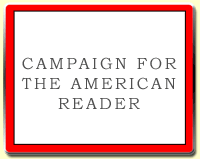 Madeline Miller was born in Boston and grew up in New York City and Philadelphia. She attended Brown University, where she earned her BA and MA in Classics. For the last ten years she has been teaching and tutoring Latin, Greek and Shakespeare to high school students. She has also studied at the University of Chicago’s Committee on Social Thought, and in the Dramaturgy department at Yale School of Drama, where she focused on the adaptation of classical texts to modern forms. She currently lives in Cambridge, MA, where she teaches and writes. The Song of Achilles is her first novel.
Madeline Miller was born in Boston and grew up in New York City and Philadelphia. She attended Brown University, where she earned her BA and MA in Classics. For the last ten years she has been teaching and tutoring Latin, Greek and Shakespeare to high school students. She has also studied at the University of Chicago’s Committee on Social Thought, and in the Dramaturgy department at Yale School of Drama, where she focused on the adaptation of classical texts to modern forms. She currently lives in Cambridge, MA, where she teaches and writes. The Song of Achilles is her first novel.From her list of ten favorite classical works, as told to the Guardian:
Read about the other entries on the list.The Iliad and The Odyssey by Homer
Is it cheating to include them both? The first is Homer's action-packed and psychologically acute paean to a single man's rage. The second is the tumultuous journey of a war veteran struggling to get home to his family. Both are bursting with incident, poetry and amazing characters that grab the attention. When I began writing my own novel, I found myself constantly having to rein in digressions trying to include them all.
 The Iliad also appears on Bettany Hughes's six best books list, James Anderson Winn's five best list of works of war poetry, and John Mullan's lists of ten of the best funerals in literature and ten of the best examples of ekphrasis. It is one of Karl Marlantes's top ten war stories.
The Iliad also appears on Bettany Hughes's six best books list, James Anderson Winn's five best list of works of war poetry, and John Mullan's lists of ten of the best funerals in literature and ten of the best examples of ekphrasis. It is one of Karl Marlantes's top ten war stories.The Odyssey also made John Mullan's lists ten of the best shipwrecks in literature, ten of the best monsters in literature, ten of the best examples of rowing in literature, and ten of the best caves in literature, as well as Justin Somper's top ten list of pirate books and Carsten Jensen's list of the top ten seafaring tales.
--Marshal Zeringue














































